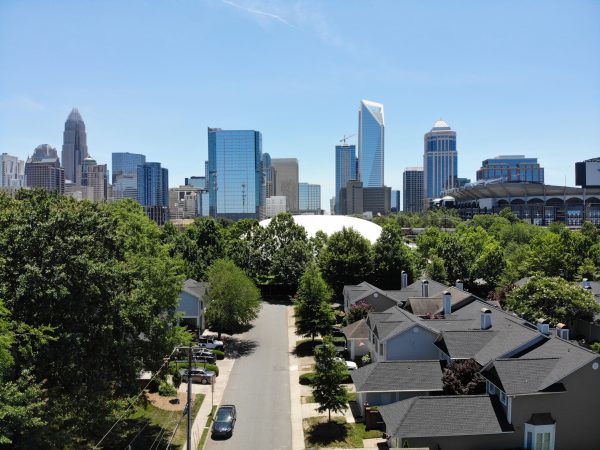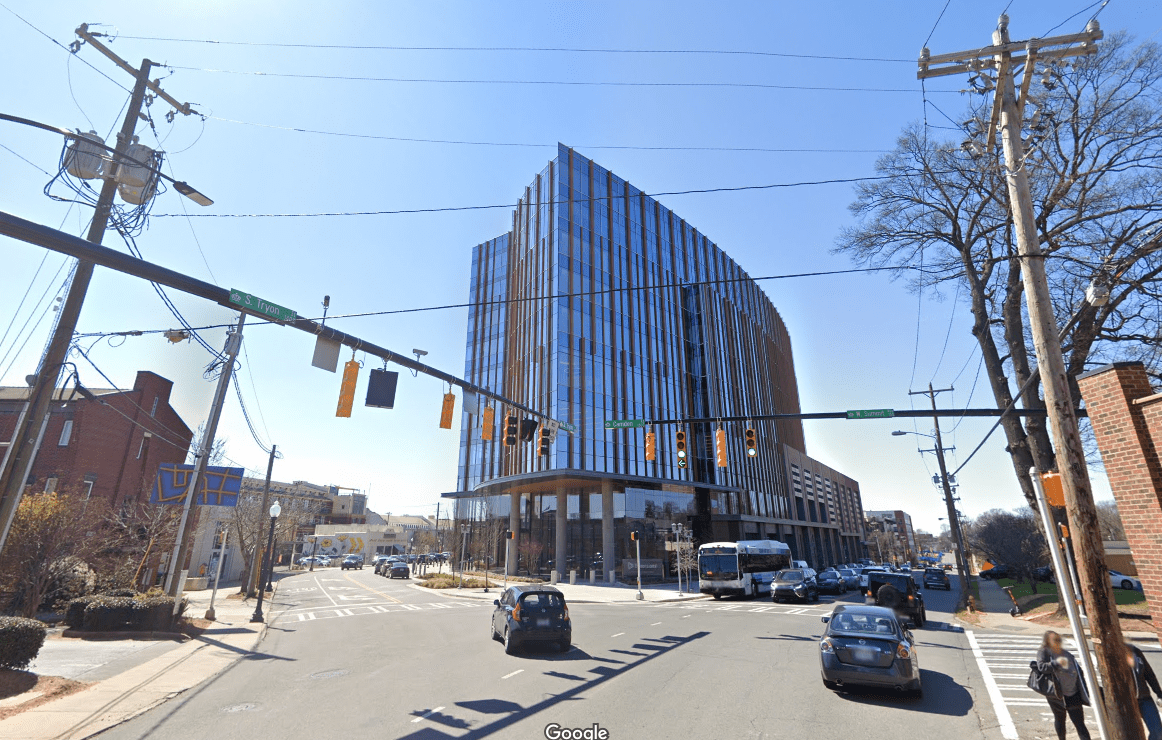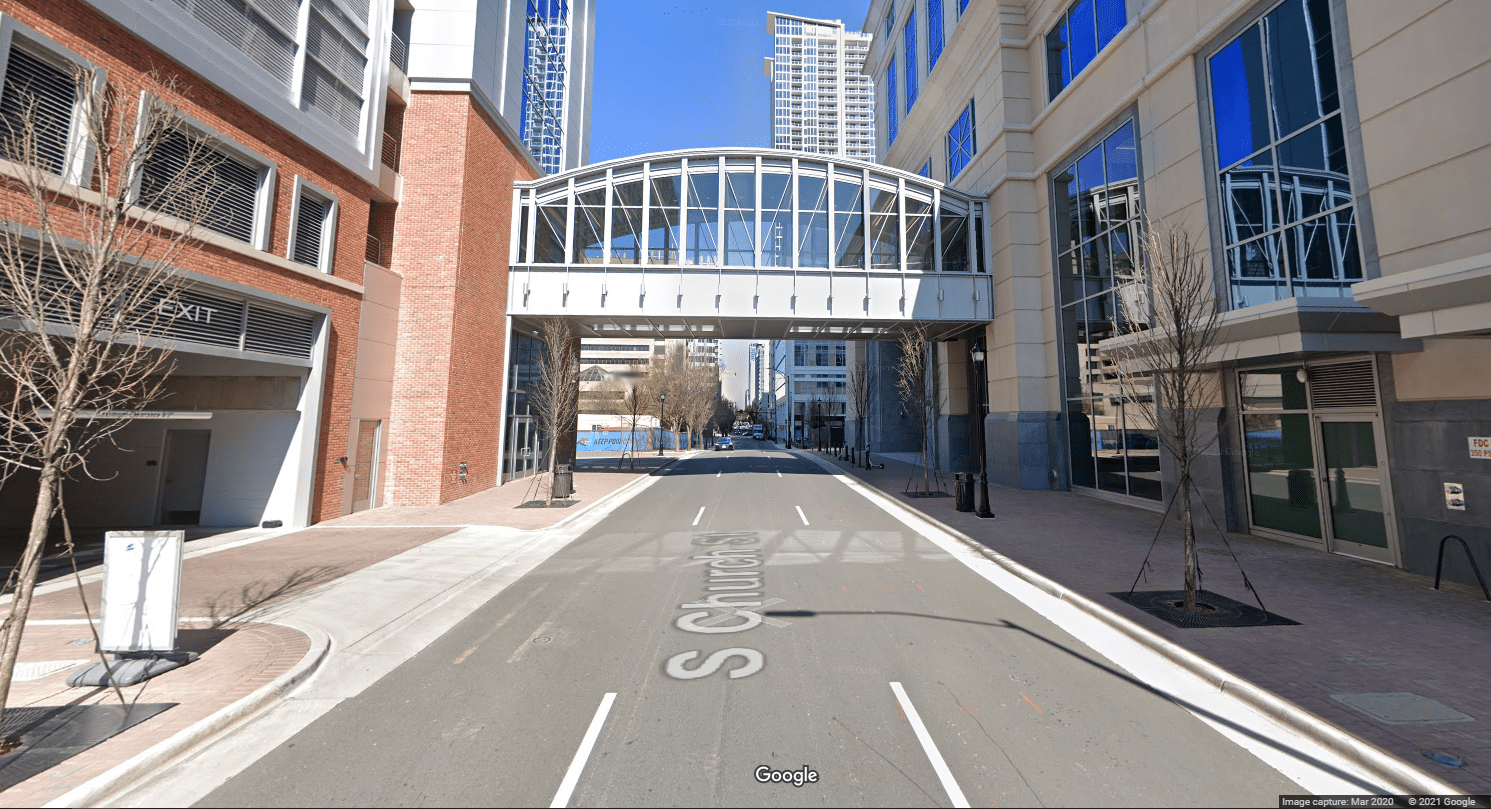Five interesting ideas from Charlotte’s draft Center City plan

What will Charlotte’s center city look like in two decades? A draft plan quietly unveiled last week after more than a year offers plenty of recommendations, mostly centered around the idea of a denser, more walkable, more equitable district, with more shops, parks and “signature” experiences to draw visitors.
“All in 2040,” the latest vision plan from Charlotte Center City Partners, follows decades of envisioning, imagining and aspiring in uptown. Each plan serves as a kind of encapsulation of a decade’s priorities and what the city’s movers-and-shakers want to see happen. Past plans have typically proven influential. Some of the ideas have come to pass (more parks, the Rail Trail, uptown stadiums) while others (a zoo, capping I-277 and building atop the freeway) haven’t.
[Read and comment on the draft Center City vision plan here]
The draft recommendations in this vision plan place a greater emphasis on equity, economic mobility and “soft” infrastructure like childcare than previous iterations, which focused mainly on the physical environment. There are dozens of aspirational goals laid out and recommended policies for how to reach them. Rather than dissect the whole plan, here are five interesting recommendations that the plan lays out, chosen to spark interest:
- Consolidate existing rail infrastructure north of uptown and create a large park, on par with Atlanta’s Piedmont Park. The draft recommends securing at least 75-150 contiguous acres in what’s currently a rail yard and creating a “g a major, iconic park within Center City [that]… would be a major destination for both residents and visitors.” This is similar to the Queen’s Park proposal. The major hurdles, of course, would be funding and securing Norfolk Southern’s cooperation, a feat that’s proved impossible so far on the Red Line commuter rail corridor.
- Bury all power lines in central Charlotte. It seems like a modest proposal, but, in addition to creating a greater risk of power loss when storms happen or cars run into light poles, above-ground power lines have long annoyed urbanists who see them as visual pollution and suburban-looking. Here’s what above-ground lines do to the otherwise pretty urban intersection of Camden and Tryon in South End, for example.

- Build something like Chicago’s “Bean.” Despite well-known photo spots and pieces of public art like the “Firebird” statue, Charlotte doesn’t have a must-see attraction that everyone knows they need a photo in front of. The plan suggests remedying that with an iconic piece of art and accompanying public space. “A common theme among community stakeholders is that Center City needs a recognizable iconic experience, like “The Bean” in Chicago’s Millennium Park or the San Antonio River Walk.”
- Stop developers from building new, elevated walkways and tunnels that hurt street vibrancy. The plan says Charlotte should “Prohibit the development of new skywalks that removes foot traffic from surface streets and negatively
impacts the pedestrian environment.” In addition to older developments like Overstreet Mall (the series of tunnels and elevated walkways that turned much of uptown inside-out, taking shops and pedestrians off the street and tucking them inside closed office towers), new developments still include these features. Here’s the skywalk at the newly built Legacy Union development, constructed by Lincoln Harris a block from Bank of America Stadium, sterilizing a good block of South Church Street.

- Building more “soft” infrastructure like child care, pharmacies and grocery stores. Uptown and South End have plenty of offices, restaurants and bars, but there are still shortages in other areas, especially in underserved neighborhoods. Providing “Space or funding for high-priority community priorities such as childcare facilities, full-service grocery stores, pharmacies and health clinics,” is one recommendation, as is loosening ground-floor retail requirements to allow childcare centers in more new developments. An entire section of the plan is devoted to recognizing childcare as an essential part of economic development (it’s the biggest expense for many families, and a huge source of stress for working parents) and promoting more childcare options for workers uptown. One recommendation: “Work with corporate partners to provide on-site or nearby childcare for employees, especially for lower-paying industries and those with swing and night shifts, such as hospitality.”
Center City Partners is accepting feedback on the plan through Aug. 31. They’ll refine recommendations and publish a final plan in the months ahead.